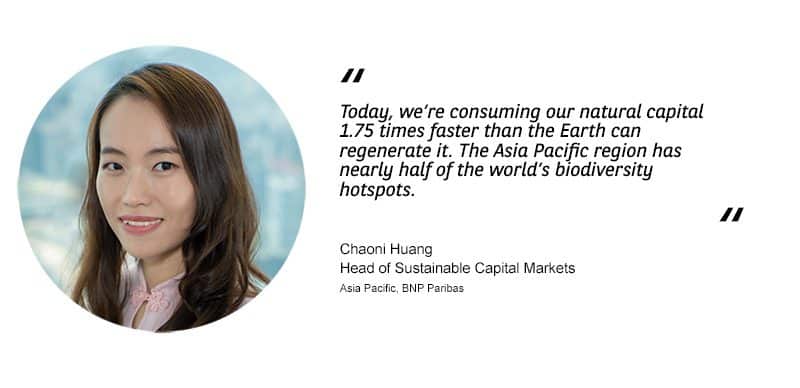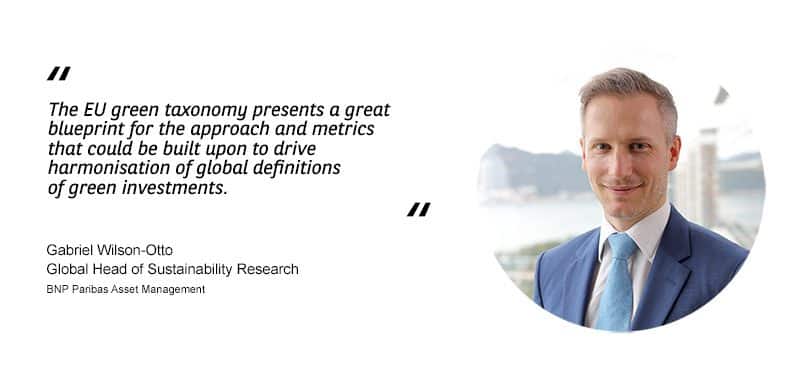“Governments, financial institutions, corporates and individuals recognise that we face parallel, connected crises: Covid-19, climate change and biodiversity loss,” said Gabriel Wilson-Otto, Global Head of Sustainability Research at BNP Paribas Asset Management. “That awareness is creating a window of opportunity for the global economy, and we expect it will continue its pivot towards a more sustainable growth path in 2021.”
A rush of investment
In its 2019 ESG Global Survey, BNP Paribas found that a majority of asset managers and owners expect environmental, social and governance (ESG) fund allocations to increase further in the next two years, and that 40% of hedge funds are integrating ESG into decision-making.Corporations are reducing their environmental footprint, responding to demand for greater disclosure of ESG risks from investors as well as their customers and employees. Driven by this growing climate consciousness, investment in ESG funds hit an all-time high in 2020, with $347 billion of inflows and 700 new funds launched globally.
Ambitious net-zero targets
Ahead of the 26th United Nations Climate Change Conference of the Parties (COP26) in November this year, countries are expected to update their voluntary contributions toward achieving the Paris Agreement goal of keeping atmospheric warming below two degrees by 2050.“2020 was a watershed year in emissions pledges, with China, Japan and Korea setting ambitious net-zero targets,” said Chaoni Huang, Head of Sustainable Capital Markets for Asia Pacific at BNP Paribas. “These pledges are not just about regulation and policy. It’s about sending a strong message to corporates that if they want to be part of the country’s future, they need to shift to a more sustainable strategy.”
So far, most green investment has been directed toward carbon emissions, the immediate cause of climate change, and their knock-on effects on the worse storms, floods, droughts and wildfires seen in Asia Pacific in recent history.
“Carbon neutrality pledges will lead to a new wave of green bond issuance to address climate action,” even if green bond issuance actually declined slightly in 2020, despite the net-zero pledges, said Huang. “This is more reflective of the current Covid-19 crisis, as investors direct their firepower to social bonds targeting urgent public health needs. It doesn’t negate the long-term trend to more green investment,” Huang explained.
Natural capital
Eliminating carbon emissions is just one part of what the planet requires to reach a sustainable equilibrium. The World Economic Forum estimates that biodiversity and ecosystem loss are among the top five threats to humanity, with more than 50% of the world’s GDP – or $44 trillion – drawing on ‘natural capital’ – such as soil, air, water, minerals and living organisms – at an unsustainable rate.“Today, we’re consuming our natural capital 1.75 times faster than the Earth can regenerate it,” Huang explained. “The Asia Pacific region has nearly half of the world’s biodiversity hotspots,” she added, “But funding prevention and restoration is often unbankable due to the unprofitable economics of these investments.”

Businesses will face increasing expectations that they recognise the true cost of the natural resources they consume, argued Wilson-Otto. “The broader impacts of business are now all coming into question from investors,” he said. “What constitutes a viable or competitive business model will shift as negative externalities are factored in, and this will force a fundamental change in how we value these companies, and how we allocate investment.”
“Companies that demonstrate their commitment to carbon neutrality and biodiversity will command better rates of funding, simply because the demand from investors is so strong,” agreed Huang. “One example that stands out is the blue bond issued by Bank of China last year. It was many times oversubscribed because investors loved the thematic, with proceeds directed to projects tackling marine pollution.”
A longer road to transition
The road to net-zero will be longer and more complex for carbon intensive sectors like oil and gas, steel and cement manufacturing. Companies in these sectors may not immediately qualify for green bonds or loans, which require that their proceeds are used for low-carbon projects.Transition bonds have been less popular than green financing, but that is about to change. In 2020, the growth of sustainability-linked bonds helped companies support their transition. In 2021, “Energy transition finance is going to take off like a rocket,” said Huang. “Countries’ voluntary carbon neutrality commitments at COP26 will create a huge tailwind.”
An added benefit of more funding being available is that it can support research into alternative, less carbon-intensive technologies. For example, the steel industry relies heavily on coking coal, but developing the use of hydrogen for steel smelting would decouple the heavy construction and engineering sectors from their reliance on coal. Projects are under development to accelerate clean hydrogen production for the steel industry, spurred by demand for greener alternatives to existing methods.
Toward ESG standardisation
Investors seeking issuers with solid environmental credentials must navigate data gaps and still rely on a bewildering array of definitions and classifications that can make valuing assets tricky and introduce the possibility of greenwashing.
2020 saw encouraging progress towards harmonisation of ESG standards, however significant work remains to be done. “The EU green taxonomy presents a great blueprint for the approach and metrics that could be built upon to drive harmonisation of global definitions of green investments,” said Wilson-Otto. He argued that it is important to distinguish between common metrics, which are vital, and thresholds that may vary globally. For example, under the IEA Sustainable Development Scenario, different regions have different transition pathways or allocations of the carbon budget to limit warming to well below two degrees.
To this end, Singapore’s Monetary Authority has formed a Green Finance Industry Taskforce that is working with industry participants including BNP Paribas to create an ASEAN green investment taxonomy that draws on insights from the European Union green taxonomy. With a reliable system of labelling and classification in place, greater investor confidence can in turn drive better-designed and targeted issuances by companies seeking funding for their ESG initiatives.
